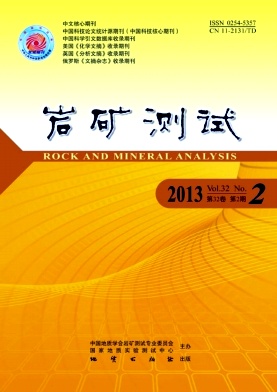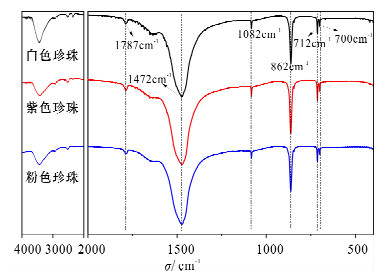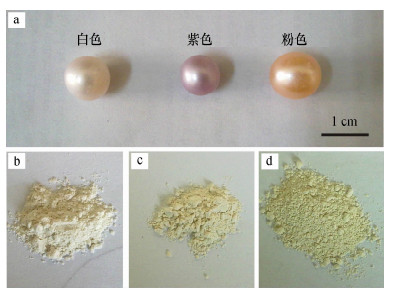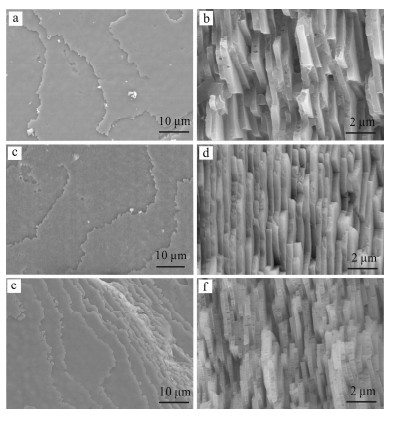| [1] |
Ma H Y, Li R K, Yang L X, Zhang B L, Shen M D, Mu S C, Wei Q G. A modified integrated model of the internal structure of Chinese cultured pearls [J]. Journal of Wuhan University of Technology—Materials Science Edition, 2011, 26(3): 510-513. doi: 10.1007/s11595-011-0258-5
CrossRef Google Scholar
|
| [2] |
张妮,郭继春,张学云,李加贵.淡水珍珠中文石球粒的发现与成珠机制探讨[J].矿物学报,2005, 25(3): 307-311.
Google Scholar
|
| [3] |
张恩,彭明生,梁超伦,邹永廖,邢铭.珍珠显微结构及纳米矿物的电镜分析[J].矿物学报,2008, 28(2): 112-116.
Google Scholar
|
| [4] |
黄青萍,盘红梅.珍珠的药理作用及临床应用[J].时珍国医国药, 2000, 11(6): 564-565.
Google Scholar
|
| [5] |
Hoskins C L, Alexander V. Determination of carotenoid concentrations in marine phytoplankt on by resonance Raman spectrometry [J]. Analytical Chemistry, 1977, 49(6): 695-697. doi: 10.1021/ac50014a008
CrossRef Google Scholar
|
| [6] |
Vukusic P, Sambles J R, Lawrence C R. Color mixing in wing scales of a butterfly [J]. Nature, 2000, 404: 457. doi: 10.1038/35006561
CrossRef Google Scholar
|
| [7] |
Vukusic P, Sambles J R, Lawrence C R. Photonic structure in biology [J]. Nature, 2003, 424: 852-855. doi: 10.1038/nature01941
CrossRef Google Scholar
|
| [8] |
李勃,李琦,周济,李龙土.庄周之梦蝶的光子带隙结构[J].科学通报, 2004, 49(22): 2367-2368. doi: 10.3321/j.issn:0023-074X.2004.22.019
CrossRef Google Scholar
|
| [9] |
Zi J, Yu X, Li Y, Xu C, Wang X. Coloration strategies in peacock feather[J]. Proceeding of the National Academy of Sciences, 2003, 100(22): 12576-12578. doi: 10.1073/pnas.2133313100
CrossRef Google Scholar
|
| [10] |
Paker A R, Welch V L, Driver D, Matini N. Structure color-opal analogue discovered in a weevil [J]. Nature, 2003, 426: 786-787. doi: 10.1038/426786a
CrossRef Google Scholar
|
| [11] |
李耿,林瓴,沙拿利,赵海云.淡水养殖珍珠的光泽颜色与有机质的关系初探[J].桂林工学院学报,2007, 27(4): 569-571.
Google Scholar
|
| [12] |
张刚生,谢先德,王英.三角帆蚌贝壳珍珠层中类胡萝卜素的激光拉曼光谱研究[J].矿物学报,2001, 21(3): 389-392.
Google Scholar
|
| [13] |
杨明月,郭守国,史凌云,王伟忠.淡水养殖珍珠的化学成分与呈色机理研究[J].宝石与宝石学杂志,2004, 6(2): 10-13.
Google Scholar
|
| [14] |
李雪英,王海增,孙省利,张际标.不同颜色珍珠的傅里叶变换红外光谱和石墨炉原子吸收光谱分析[J].宝石与宝石学杂志, 2007, 9(1): 15-18.
Google Scholar
|
| [15] |
Yablonovitch E. Inhibited spontaneous emission in solid-state physics and electronics [J]. Physical Review Letters, 1987, 58(20): 2059-2062. doi: 10.1103/PhysRevLett.58.2059
CrossRef Google Scholar
|
| [16] |
John S. Strong localization of photonics in certain disordered dielectric super lattices [J]. Physical Review Letters, 1987, 58(20): 2486-2489.
Google Scholar
|
| [17] |
Ho K M, Chan C T, Soukoulis C M. Existence of a photonic gap in periodic dielectric crystals by multibeam laser interference into a photopolymerizable resin[J]. Physical Review Letters, 1990, 65(25): 3152-3155. doi: 10.1103/PhysRevLett.65.3152
CrossRef Google Scholar
|
| [18] |
Li Z Y, Wang J. Creation of partial band gaps in anisotropic photonic-band-gap structure[J]. Physical Review B, 1998, 58(7): 3721-3729. doi: 10.1103/PhysRevB.58.3721
CrossRef Google Scholar
|
| [19] |
Yablonovitch E. Photonic band gap structures [J]. Journal of Optical Society of American B, 1993, 10(2): 283-294. doi: 10.1364/JOSAB.10.000283
CrossRef Google Scholar
|
| [20] |
Fink Y, Winn J N, Fan S, Chen C. A dielectric omnidirectional reflector [J]. Science, 1998, 282(5394): 1679-1682. doi: 10.1126/science.282.5394.1679
CrossRef Google Scholar
|
| [21] |
木士春,马红艳.养殖珍珠微量元素特征及其对珍珠生长环境的指示意义[J].矿物学报, 2001, 21(3): 551-553.
Google Scholar
|
| [22] |
张妮,郭继春,张学云,李加贵.珍珠表面形貌的AFM和SEM研究[J].岩石矿物学杂志, 2004, 24(4): 370-374.
Google Scholar
|
| [23] |
李勃,周济,李龙土,李琦,韩朔,郝智彪.鲍鱼壳中的一维光子带隙结构[J].科学通报, 2005, 50(13): 1422-1424. doi: 10.3321/j.issn:0023-074X.2005.13.022
CrossRef Google Scholar
|
| [24] |
严俊,张刚生.褶纹冠蚌贝壳结构特征及其彩虹色呈色机制[J].安庆师范学院学报:自然科学版, 2011, 17(3): 83-85.
Google Scholar
|
| [25] |
张伟钢,严俊,汪港,李浩璇,张刚生.一种天然湿敏性二维可调光子带隙材料及其光学性能研究[J].无机材料学报, 2009, 24(1): 57-60.
Google Scholar
|
| [26] |
Tan T L, Wong D, Lee P. Iridescence of a shell of mollusk Haliotis Glabra [J]. Optics Express, 2004, 12(20): 4847-4854. doi: 10.1364/OPEX.12.004847
CrossRef Google Scholar
|







 DownLoad:
DownLoad:

